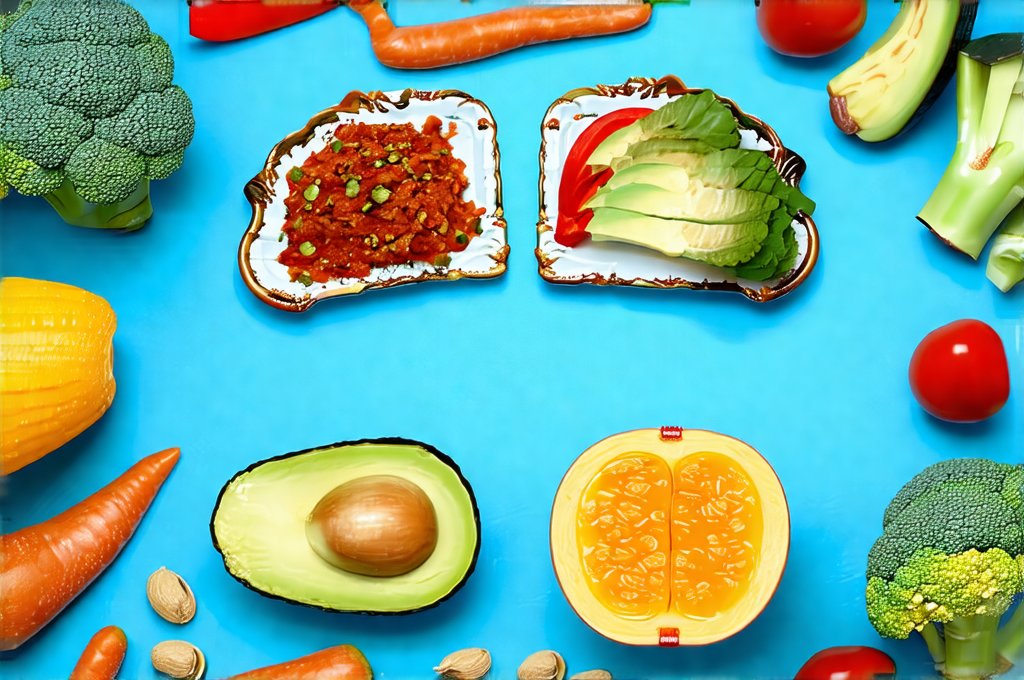We all have those foods we crave. The ones that just…hit different. Maybe it’s a specific chocolate bar, a bag of salty chips, a warm slice of pizza, or even something seemingly innocuous like a glass of orange juice. These aren’t necessarily “bad” foods; often they are simply highly palatable and enjoyable. However, when these cravings lead to consuming multiple trigger foods simultaneously – essentially stacking temptation upon temptation – it can create a cascade of physiological and psychological effects that derail our best intentions around eating and potentially contribute to feelings of discomfort or even guilt. Understanding why this happens and how to manage it is key to fostering a healthier relationship with food.
The modern food environment is engineered for hyper-palatability, meaning foods are designed with combinations of sugar, fat, and salt that activate reward centers in the brain far more intensely than naturally occurring foods. This creates a powerful drive to eat, even when we’re not physically hungry. When we then combine several of these highly rewarding stimuli at once—think ice cream with hot fudge and sprinkles—we’re overloading those systems and making it incredibly difficult for our brains to regulate intake. This isn’t about willpower; it’s about the biology of how we experience pleasure and reward. It’s a challenge many face, and recognizing the pattern is the first step toward creating more mindful eating habits. If you are concerned your food choices trigger reactions, consider can fermented foods?
The Neuroscience Behind Food Stacking
Food stacking – that simultaneous consumption of multiple trigger foods – isn’t simply a matter of indulging in several treats. It’s deeply rooted in how our brains respond to food rewards. Dopamine, often called the “feel-good” neurotransmitter, plays a crucial role. When we eat something pleasurable, dopamine is released, reinforcing the behavior and making us want more. Highly palatable foods trigger significantly higher dopamine release than less processed options. This surge isn’t just about taste; it’s linked to anticipation, craving, and even addiction-like patterns of behavior.
Now, imagine combining several such foods. The brain receives a massive influx of dopamine, creating an exceptionally powerful reward signal. This can lead to what’s known as “hedonic overeating” – eating beyond the point of physical fullness simply for the pleasure it provides. This is where things become problematic because this intense stimulation isn’t sustainable and can actually diminish our sensitivity to natural rewards like healthy foods or even social connection. The brain begins to demand more extreme stimuli to achieve the same level of satisfaction, creating a vicious cycle.
Furthermore, combining trigger foods often means combining different textures and flavors – crunchy with creamy, sweet with salty – further amplifying the sensory experience and making it harder to resist overconsumption. This is why movie theaters thrive on popcorn slathered in butter and sugary drinks; the combination is designed to be irresistible, even when you’re not actually hungry. It’s a potent example of how food stacking isn’t just about individual cravings but also about strategically engineered sensory overload. Understanding why you might react to certain foods is also helpful.
The Psychological Impact of Trigger Food Combinations
Beyond the neurological effects, combining trigger foods often taps into emotional and psychological patterns. For many people, certain foods are linked to comfort, nostalgia, or even coping mechanisms for stress or negative emotions. When we combine these emotionally charged foods, we’re not just satisfying a physical craving; we’re also seeking an emotional boost. This can create a powerful association between food and mood regulation, leading to reliance on these combinations during times of stress, sadness, or boredom.
This is particularly evident in situations where we “reward” ourselves with food after a challenging day. The reward isn’t necessarily the taste itself but the temporary relief and comfort it provides. Stacking trigger foods amplifies this effect, offering an even more potent emotional experience. However, the relief is often short-lived, followed by feelings of guilt, shame, or regret. This cycle can contribute to a negative self-image and perpetuate unhealthy eating habits. Breaking this pattern requires recognizing the underlying emotional needs that are being addressed through food.
Moreover, combining trigger foods can lead to a sense of “all-or-nothing” thinking. If you’ve already indulged in one tempting treat, the logic often shifts to “well, I’ve blown it now, might as well have another.” This is a classic example of cognitive distortion that justifies further overconsumption. The feeling of losing control can be incredibly disempowering and contribute to a sense of helplessness around food choices.
Identifying Your Personal Trigger Foods
The first step in managing food stacking is identifying your specific trigger foods – the ones that are hardest to resist and often lead to overeating, especially when combined. This isn’t about labeling foods as “good” or “bad”; it’s about understanding which foods have a strong emotional or physiological hold on you.
- Start by keeping a food journal for a week or two. Record not just what you eat but also how you feel before, during, and after eating. Note any emotions, stress levels, or situational factors that might be contributing to your cravings.
- Pay attention to patterns: Are there certain times of day when you’re more likely to crave specific foods? Do you tend to gravitate towards trigger foods when you’re feeling stressed, bored, or lonely?
- Be honest with yourself: Identify the foods that consistently lead to overconsumption, even if they seem harmless. This could include anything from chocolate and chips to sugary drinks and processed snacks.
Once you have a clearer understanding of your personal trigger foods, you can start to develop strategies for managing them. This might involve reducing their availability in your home, finding healthier alternatives, or simply being more mindful of portion sizes. The goal isn’t deprivation; it’s about making conscious choices rather than reacting impulsively to cravings. If reintroducing these foods is a concern, learn what to do when.
Mindful Eating as a Countermeasure
Mindful eating is a powerful tool for breaking the cycle of food stacking and fostering a healthier relationship with food. It involves paying attention to the present moment without judgment, focusing on the sensory experience of eating, and recognizing your body’s hunger and fullness cues. This stands in stark contrast to mindless eating, where we often consume food on autopilot without fully appreciating it or noticing how much we’re actually eating.
- Slow down: Take smaller bites and chew your food thoroughly. Savor the flavors and textures.
- Eliminate distractions: Turn off the TV, put away your phone, and focus solely on your meal.
- Pay attention to hunger and fullness cues: Before you start eating, assess how hungry you are. During your meal, check in with yourself regularly to see if you’re still feeling satisfied. Stop when you’re comfortably full, not stuffed.
- Practice gratitude: Take a moment to appreciate the food you’re eating and where it came from.
Mindful eating isn’t about restricting what you eat; it’s about how you eat. By cultivating greater awareness around your eating habits, you can make more conscious choices and reduce the likelihood of succumbing to impulsive cravings or food stacking. It’s a skill that takes practice, but the benefits are well worth the effort.
Small Steps Towards Sustainable Change
Ultimately, managing trigger foods and preventing stacking isn’t about achieving perfection; it’s about making small, sustainable changes over time. Don’t try to overhaul your diet overnight. Instead, focus on one or two areas where you can make a difference. This might involve reducing the amount of trigger foods in your home, practicing mindful eating during one meal per day, or finding healthier alternatives for your favorite snacks.
- Start with substitution: If you crave chocolate, try swapping it for a small square of dark chocolate or a piece of fruit.
- Plan ahead: Prepare healthy meals and snacks in advance to avoid impulsive choices when you’re hungry.
- Seek support: Talk to a friend, family member, or registered dietitian about your goals. Having someone to encourage and support you can make all the difference.
- Be kind to yourself: Everyone slips up from time to time. Don’t beat yourself up over it. Simply acknowledge what happened, learn from it, and move forward.
The key is consistency and self-compassion. Building a healthier relationship with food is a journey, not a destination. By understanding the neuroscience behind food cravings, recognizing your personal trigger foods, and practicing mindful eating, you can take control of your choices and create a more balanced and fulfilling approach to nourishment. For those experiencing headaches linked to food, understanding why can be beneficial. And if concerns about allergies exist, check out common foods that trigger reactions. Finally, consider avoiding trigger foods during mealtimes for better control.


















